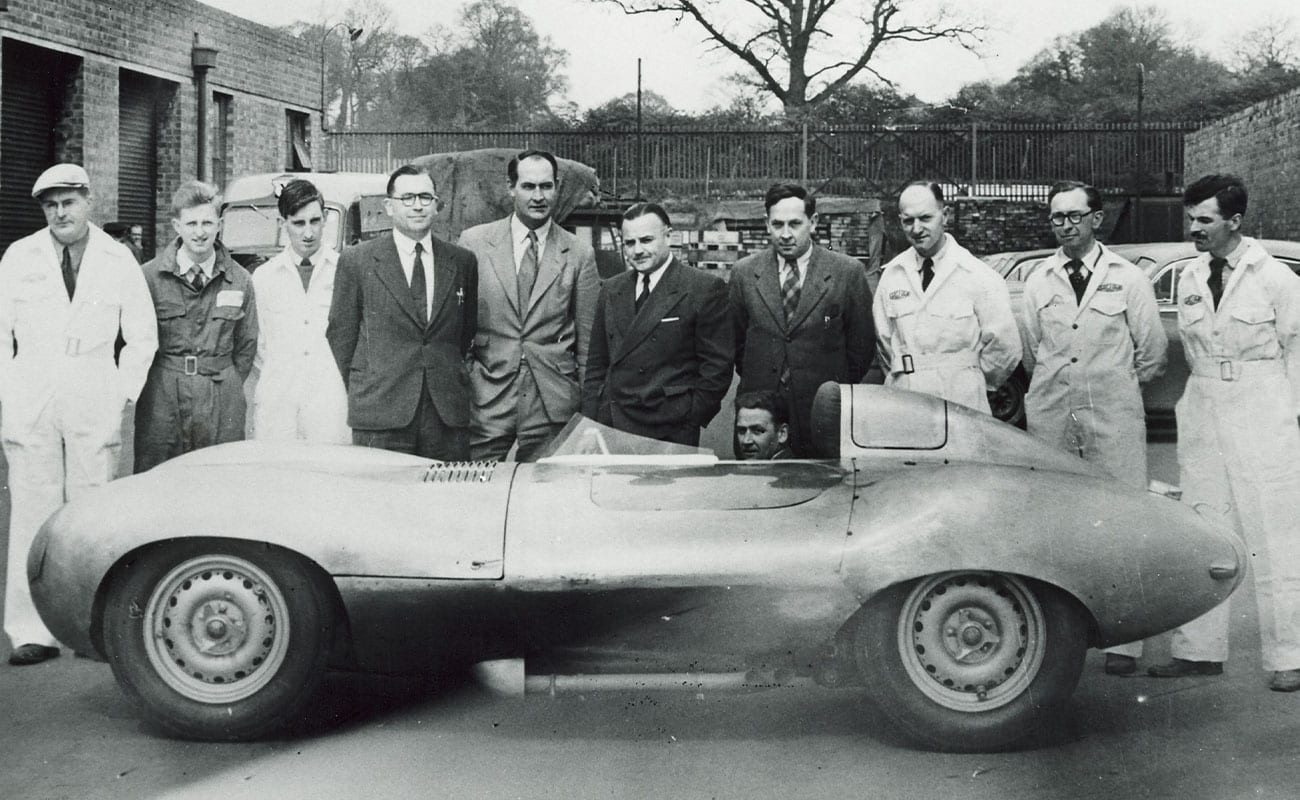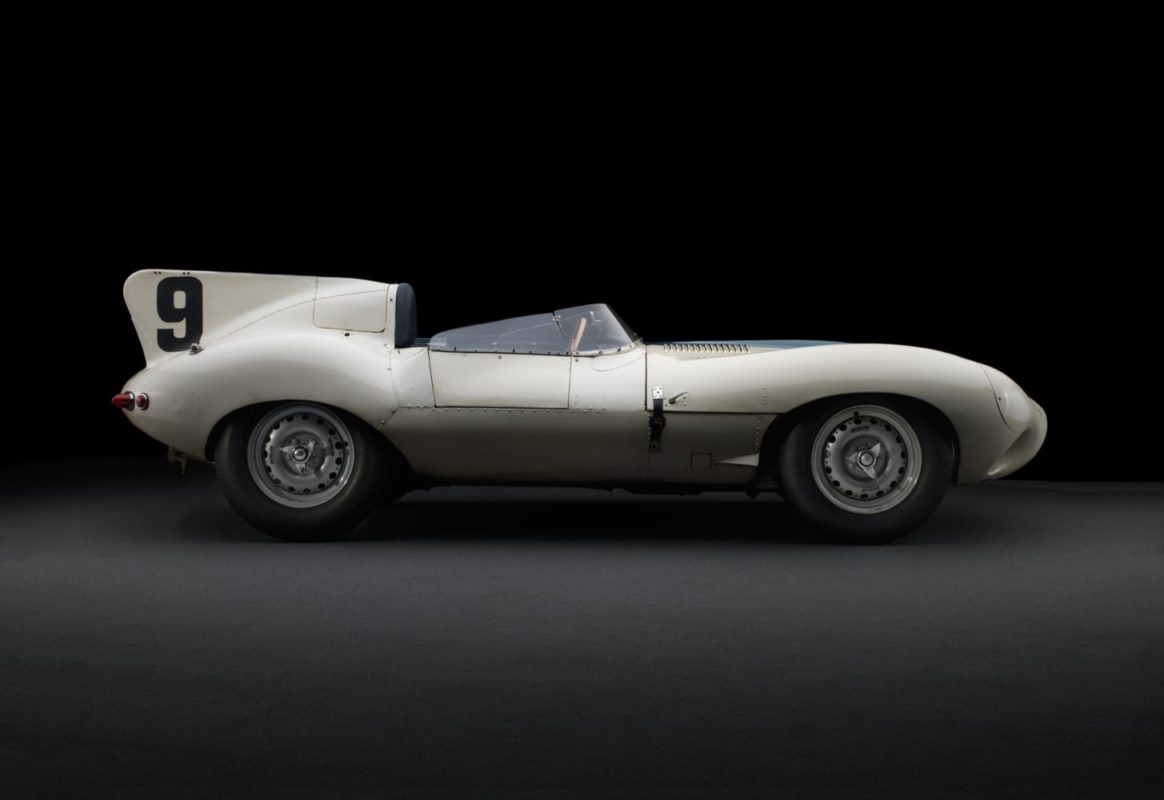Tech Specs
Six-cylinder in-line engine, double overhead camshafts, two valves per cylinder, three dual-throat Weber carburetors, 3442 cc (210 cubic inches), 270 hp at 6000 rpm.
Before/After
1955 Jaguar


About the 1955 Jaguar D-Type
The D-Type Jaguar, successor to the C-Type, was expected to do in 1954 what its predecessor had done the year before: win Le Mans. With Jag’s legendary twin-cam six further developed and the C-Type’s space frame replaced by a monocoque tub with load-bearing external panels that nicely reduced weight, the D seemed a sure thing. That June three cars were flown to France and driven from the dock to the Sarthe circuit to fulfill their destiny. Alas, a Ferrari won.
But a few lessons were learned, among them that aerodynamics would be better served by an extended bonnet. In 1955, five “long-nose” D-Types, including the display car, were on the starting line at Le Mans. Jaguar won. D-Types repeated the victory the following two years. They were indomitable at Reims and Montlhéry, as well as all-conquering back home at Goodwood and Silverstone.
The car on display carried Jaguar honors in the U.S. Not a factory team car but what the British like to refer to as “works blessed”, this D-Type had been purchased by Briggs Cunningham. An ailing engine had curtailed its race at Le Mans in 1955. After delivery to New York and Alfred Momo’s care, the car enjoyed a splendid season, Sherwood Johnston driving to victory in the Watkins Glen Grand Prix and the Eisenhower Trophy at Hagerstown, Maryland.
And that was only the beginning of D-Type triumphs in the U.S. By now, with the car in production in England (the D’s $9875 price bought the world’s fastest two-seater, literally built alongside the MK VII and XK-140), Briggs Cunningham became the new Jaguar distributor for the Northeast and consequently fielded a full team in competition. With Walt Hansgen driving, the D-Type won SCCA C-Modified Championships in 1956 and 1957. The D’s highest speed ever – 185 mph at Bonneville – was also recorded in the U.S.
Seventy-one D-Types had been built by February 1957 when fire ravaged the Coventry factory, destroying five of the cars inside. When production was resumed, this Jaguar was not included. But the DType did not die without issue; the E-Type was soon to follow.
Photos – Peter Harholdt











